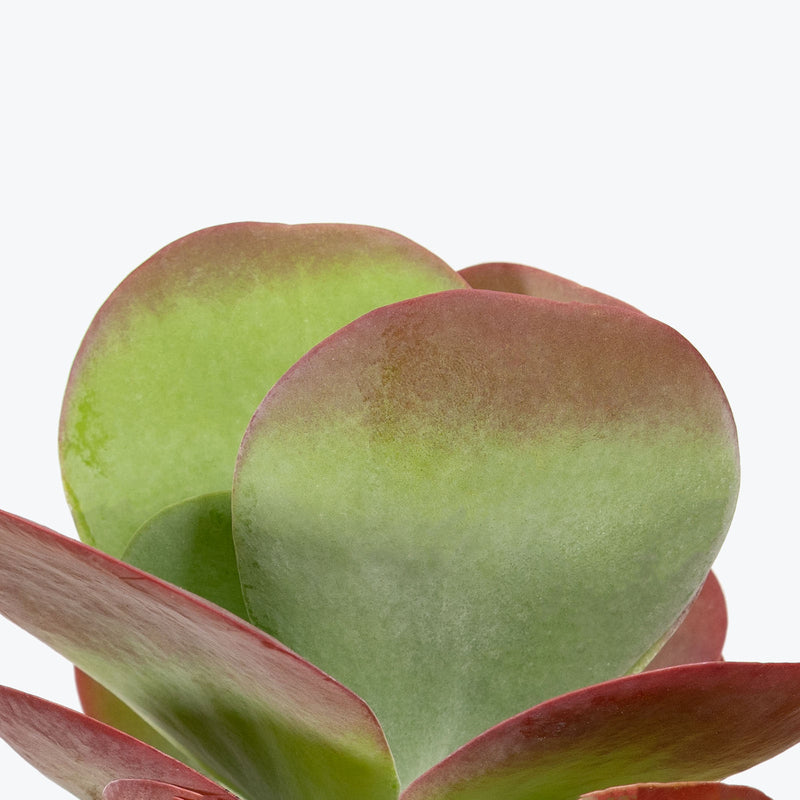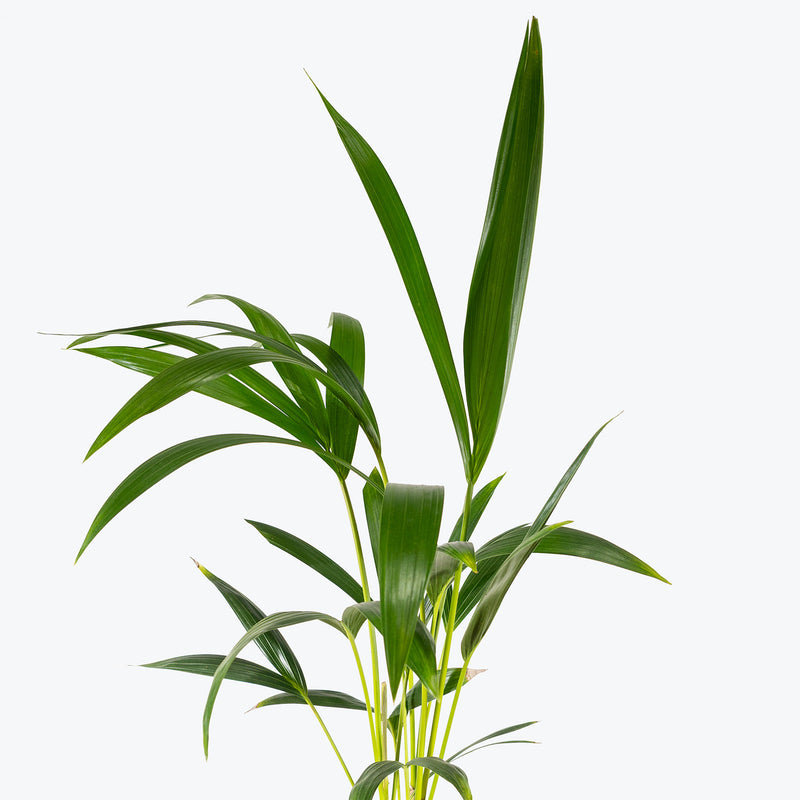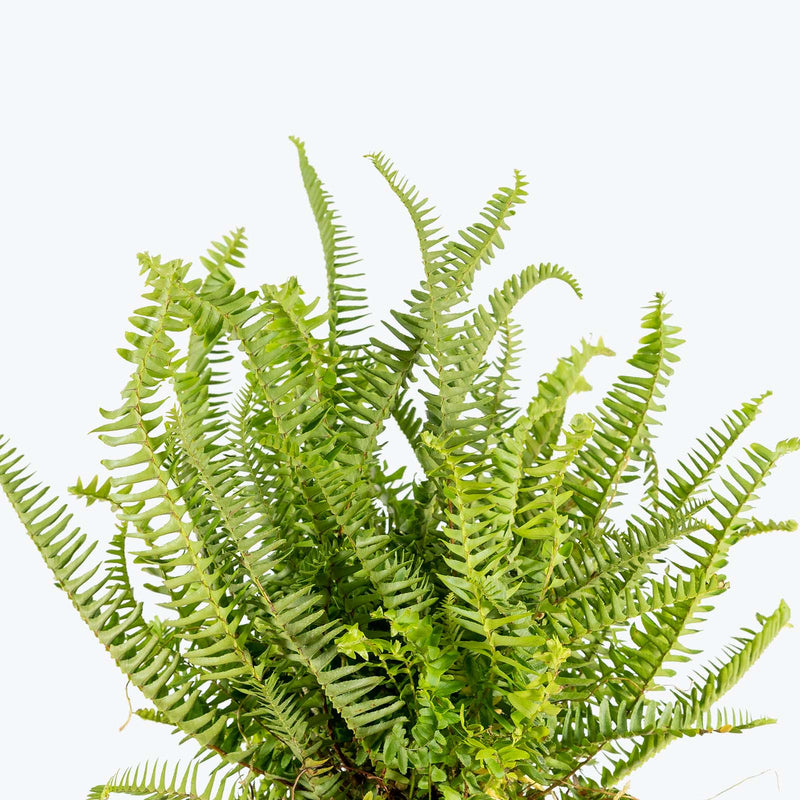Glossary
Plant Care Library
K
Kaempferia Pulchra Shazam

How to care for Kaempferia Pulchra Shazam
Kaempferia Pulchra Shazam should not be in a position to see the sun directly, although early morning or late evening sun is fine. Filtered sunlight through a sheer curtain is best and most homes are comprised primarily of indirect sunlight. The best spot for them is where they do not see the sun during the majority of the day but still get bright, indirect light.
Kaempferia Pulchra Shazam will do best in bright light. A nice bright place inside your home would be on the window sill or a stool that is right next to a window, either with or without blinds, depending on if the plant can handle sun. Remember that plants will grow based on how much light they receive.
Allow the top quarter of the soil to dry before watering again. This usually takes about 3 - 4 days in an average home environment. It will vary depending on the time of year, your environment and lighting conditions. Expect to water Kaempferia Pulchra Shazam more often in brighter light and less often in lower light.
Kaempferia Pulchra Shazam likes a high humidity environment, give them a mist daily or as often as possible. Alternatively, you can put them around a humidifier. Although they won't die if they don't receive enough humidity, their leaves may have some dry, crunchy, or yellow edges.
Remove faded flowers on Kaempferia Pulchra Shazam to encourage new blooms. During the dormant season, reduce watering but do not let the soil completely dry out.
You can feel comfortable having Kaempferia Pulchra Shazam around your home in the potential case where your pet feels like nibbling on it. However, we typically recommend keeping your pets from eating any of your houseplants..
View PlantKalanchoe Chocolate Soldier

How to care for Kalanchoe Chocolate Soldier
They should not be in a position to see the sun directly, although early morning or late evening sun is fine. Filtered sunlight through a sheer curtain is best and most homes are comprised primarily of indirect sunlight. The best spot for them is where they do not see the sun during the majority of the day but still get bright, indirect light.
They will do best in bright light. A nice bright place inside your home would be on the window sill or a stool that is right next to a window, either with or without blinds, depending on if the plant can handle sun. Remember that plants will grow based on how much light they receive.
They like the soil to be completely dry before the next watering. This can take up to 4 weeks in an average home environment but it will vary depending on the time of year, your environment and lighting conditions. For them, it's always safer to underwater or water when you see signs of lack of water (i.e. wrinkly or soft leaves). Water a little more often in the warmer months.
Their humidity requirement is low, so do not mist them or put them in a terrarium.
If you notice your plant getting leggy, or producing stretched-out growth, this is often an indication that it needs brighter light. They are also relatively slow-growing, so they won’t need much maintenance in the long run and do just fine being left alone the majority of the time.
This plant is moderately toxic and can cause some adverse reactions when ingested so it is best to not let your pets eat it, which we advise for all plants in general. The severity of the reaction will depend on how much of the plant is ingested but, if you know your pet typically does not eat your plants, this plant will be suitable for your home..
View PlantKalanchoe Flapjack

How to care for Kalanchoe Flapjack
They love as much sun as possible. The best spot for them is where they can see the sun during the majority of the day.
They will do best in bright light. A nice bright place inside your home would be on the window sill or a stool that is right next to a window, either with or without blinds, depending on if the plant can handle sun. Remember that plants will grow based on how much light they receive.
They like the soil to be completely dry before the next watering. This can take up to 4 weeks in an average home environment but it will vary depending on the time of year, your environment and lighting conditions. For them, it's always safer to underwater or water when you see signs of lack of water (i.e. wrinkly or soft leaves). Water a little more often in the warmer months.
Their humidity requirement is low, so do not mist them or put them in a terrarium.
There is a natural farina, or powdery substance, on the outside of each leaf that shouldn’t be scraped off or removed as it protects the plant from excess moisture! Although a few scuffs are normal, once it is gone, it can’t be replaced so try to keep it as unmarked as possible.
This plant is moderately toxic and can cause some adverse reactions when ingested so it is best to not let your pets eat it, which we advise for all plants in general. The severity of the reaction will depend on how much of the plant is ingested but, if you know your pet typically does not eat your plants, this plant will be suitable for your home..
View PlantKentia Palm

How to care for Kentia Palm
Kentia Palm should not be in a position to see the sun directly, although early morning or late evening sun is fine. Filtered sunlight through a sheer curtain is best and most homes are comprised primarily of indirect sunlight. The best spot for them is where they do not see the sun during the majority of the day but still get bright, indirect light.
Kentia Palm will thrive in medium to bright light, but also can tolerate low light. A good medium-light place in your home would be in the middle of a room that has a regular size window. They can be placed almost anywhere in the room but remember, plants will grow based on how much light they receive.
Allow the top quarter of the soil to dry before watering Kentia Palm again. This usually takes about 3 - 4 days in an average home environment. It will vary depending on the time of year, your environment and lighting conditions. Expect to water more often in brighter light and less often in lower light.
Kentia Palm will do well in average humidity environments but will appreciate a little bit of humidity if provided, give them a mist daily or get a humidifier.
One of the easiest palms to care for, the Kentia Palm thrives on gentle neglect. Avoid overwatering — erring on the dry side is safer than keeping it too wet. They are sensitive to heavy fertilization, so use a very diluted, slow-release palm fertilizer no more than twice a year, typically in spring and summer. Dust the fronds regularly to keep them healthy and improve their ability to photosynthesize, especially since they can collect dust easily in indoor spaces. Repot only when the palm becomes severely root-bound — they actually prefer slightly tight quarters!
You can feel comfortable having Kentia Palm around your home in the potential case where your pet feels like nibbling on it. However, we typically recommend keeping your pets from eating any of your houseplants..
Learn MoreView PlantKimberly Queen Fern

How to care for Kimberly Queen Fern
They should not be in a position to see the sun directly, although early morning or late evening sun is fine. Filtered sunlight through a sheer curtain is best and most homes are comprised primarily of indirect sunlight. The best spot for them is where they do not see the sun during the majority of the day but still get bright, indirect light.
They will thrive in bright light, but also can tolerate medium light. A good medium-light place in your home would be in the middle of a room that has a regular size window. They can be placed anywhere between the middle of the room and the window. Remember that plants will grow based on how much light they receive.
Allow the top quarter of the soil to dry before watering again. This usually takes about 3 - 4 days in an average home environment. It will vary depending on the time of year, your environment and lighting conditions. Expect to water more often in brighter light and less often in lower light.
They will do well in average humidity environments but will appreciate a little bit of humidity if provided, give them a mist daily or get a humidifier.
To keep your Kimberly Queen Fern looking its best, remove any yellowing or dead fronds as needed. Rotate the plant occasionally to ensure even growth. Repot the fern every 1-2 years to refresh the soil and provide room for growth.
You can feel comfortable having this plant around your home in the potential case where your pet feels like nibbling on it. However, we typically recommend keeping your pets from eating any of your houseplants..
View Plant



